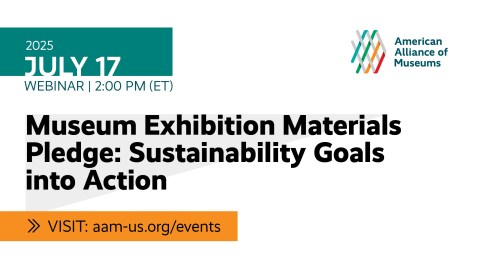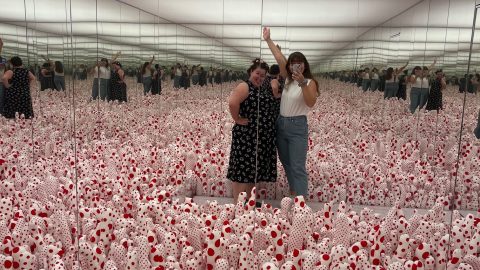
When I was a classroom teacher, I assumed that a field trip would never be worth it: not worth the money my school didn’t have, nor the time I didn’t have, nor the learning my students would lose by missing a day of school.
This imagined relationship between schools and museums was inaccurate in ways that should have been obvious. It was a little arrogant and a little pessimistic, but mostly it was lazy. I knew what teaching my students in my classroom looked like and I knew how to do it well; therefore, I believed that what was best for my students was to keep them in the classroom, maintaining the status quo.
As a museum educator for the past two years I have worked for a program, Unpacking the Past, that is specifically designed to buck the status quo. It strives to support urban schools and students that would otherwise never come on a field trip to the Penn Museum. In our first year we worked with over 5,000 students and in our second year we grew to over 6,500. We were able to do this, in part, because we understood the many barriers, both real and assumed, that kept teachers and their students in the classroom. We go out to schools to meet students where they feel most comfortable, we are in constant communication with teachers, offering them patience and support. Notably everything we do is free for the schools because the generous GRoW Annenberg initiative foots the bill, with help from the National Endowment of the Arts, Institute of Museum and Library Services, and others. The program has been a success because we take care to lower barriers to participation, but this also begs the question: how do we lower these barriers for all students?
One of the assumed barriers is relevancy. Museums across the nation have long been working at demonstrating our potential educational value to schools and visitors, showing them that museums are not just for a certain slice of the public, but can and should be an integral part of everyone’s life. However as we work to make museums relevant, even vital, resources for schools we also need to take on the responsibility of lowering another barrier: cost.
Schools have less and less discretionary funds, and in the era of high stakes testing and school accountability, the government and philanthropists are less inclined to support cultural field trips. That isn’t going to change anytime soon, so we are stuck either being valuable to only well-off schools or footing the bill ourselves. If we believe museums can and should be vital to the education of all, why do we require payment from even the most cash-poor schools?
There are, of course, good reasons to charge schools money, but none of them are insurmountable. The increased risk of “no show” schools could be offset by forms of accountability such as a deposit system. Fears of perceived value (that is, that a free museum would be seen as lower quality) ignore that teachers would see us as more valuable once they view us as partners instead of salespeople (that has certainly been our experience through the Unpacking the Past program). Revenue would decrease, but as cash-strapped as museums are, we have more resources than schools; I believe in the future it should be our responsibility to make up that revenue elsewhere instead of keeping the burden on struggling schools and parents. This shift would also require a change in how we talk about our work to each other and to philanthropists who are used to supporting museum education by picking up the school’s tab. It will be difficult, and it won’t happen tomorrow, but the current museum-school relationship is limiting our impact and so it is worth imagining future alternatives.
Working with schools for free might sound like charity, but I see it as an investment. It builds dividends that will be reaped in the future. We will have stronger relationships with our communities and schools. We will have a more cultured, educated public who will continue to visit as adults. Letting go of revenue also allows us to think more holistically about what school-museum relationships can be. We would no longer be constrained to initiatives we know how to charge for. Moving away from school revenue also encourages us to develop teacher resource centers and advisory boards in addition to traditional programing like field trips and professional development.
As I said, I love where I work. Though I was a skeptical classroom teacher, I now see daily the impact museums have on students and teachers. I believe in museums and their ability to be a key part of education now and in the future, as do many of the people who check this site. I encourage us to use that love, not to justify the current state of school-museum relationships, but to imagine with a passionate criticalness how much better we can be.
I would be eager to hear what other museum educators think about working with schools for free, both as an idea and as something to be implemented. Especially federally-run museums that already work with schools in this way. What does this idea reveal about how your museum interacts with schools? If implemented, how would this change how you do your work? How would this change how your department works with the rest of your museum?
About the Author: Thomas Leischner has worked with Philadelphia students in a variety of contexts. He has served as a long-term substitute teacher in various schools in the region and as a social studies teacher at an alternative, therapy-centered high school. After three summers teaching at the Penn Museum’s “Anthropologists in the Making” camp, he began as a full-time educator working on the Museum’s 9-12 grade initiatives and Unpacking the Past, a free program that serves Philadelphia public and Title 1 charter schools. You can reach him at: tleisc@upenn.edu and on Twitter @ThomasLeischner








